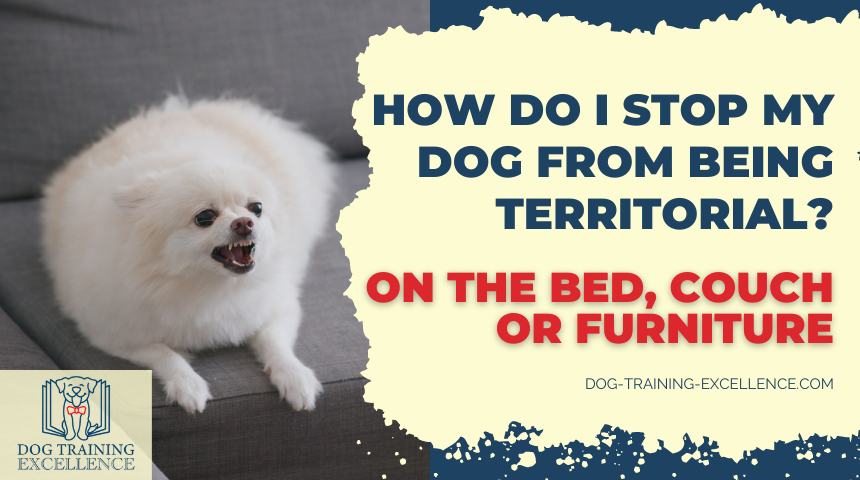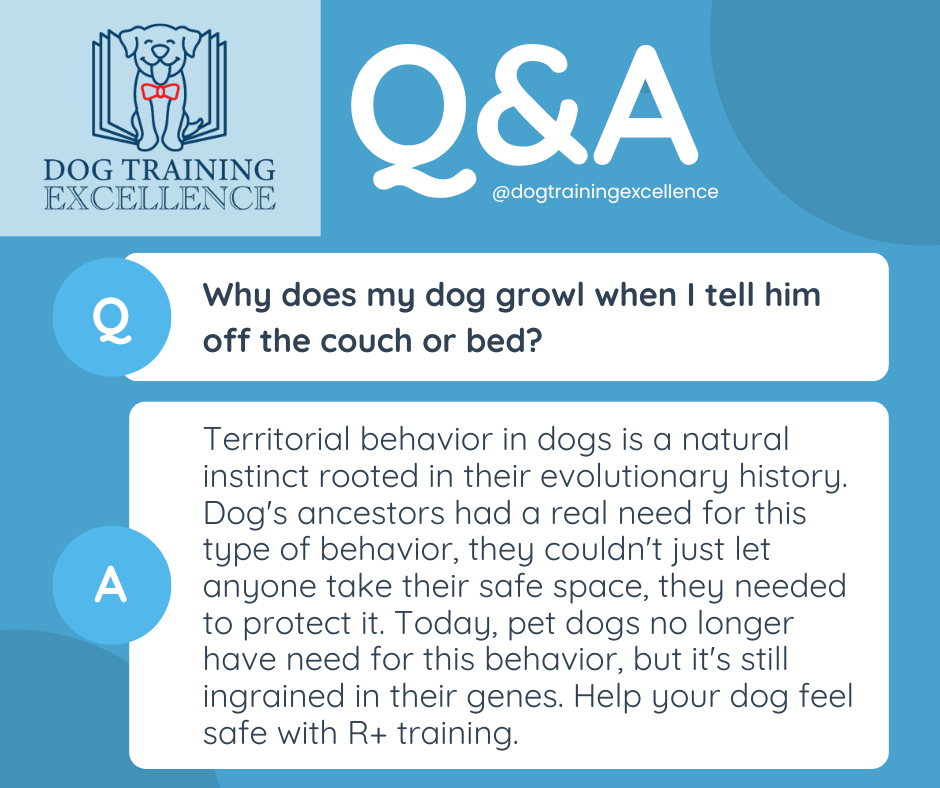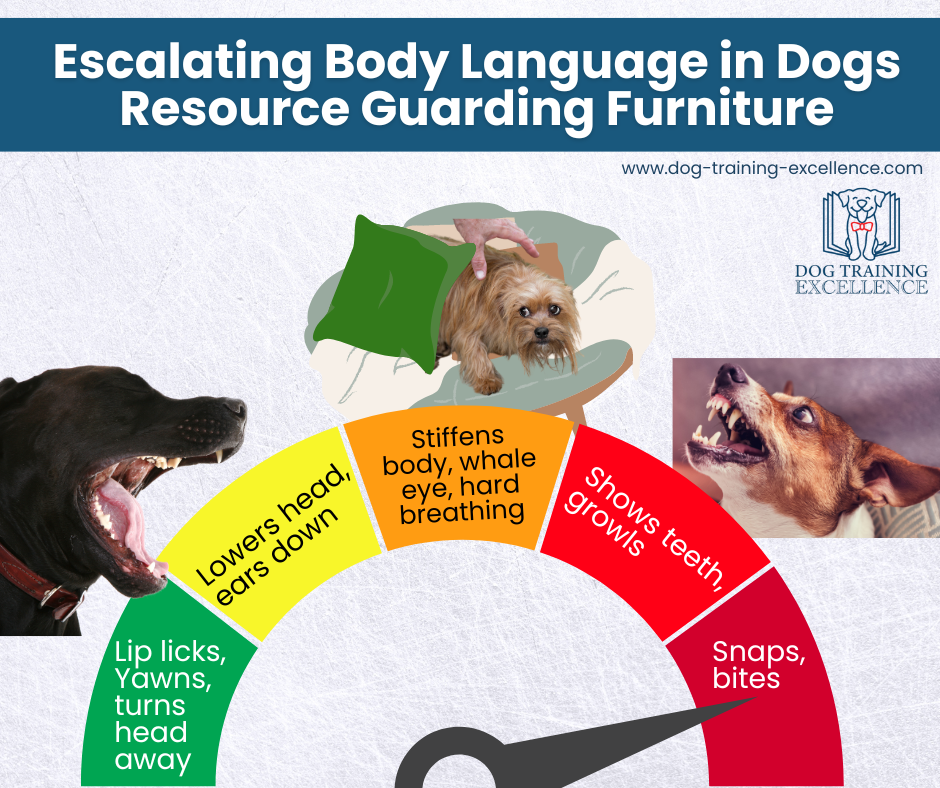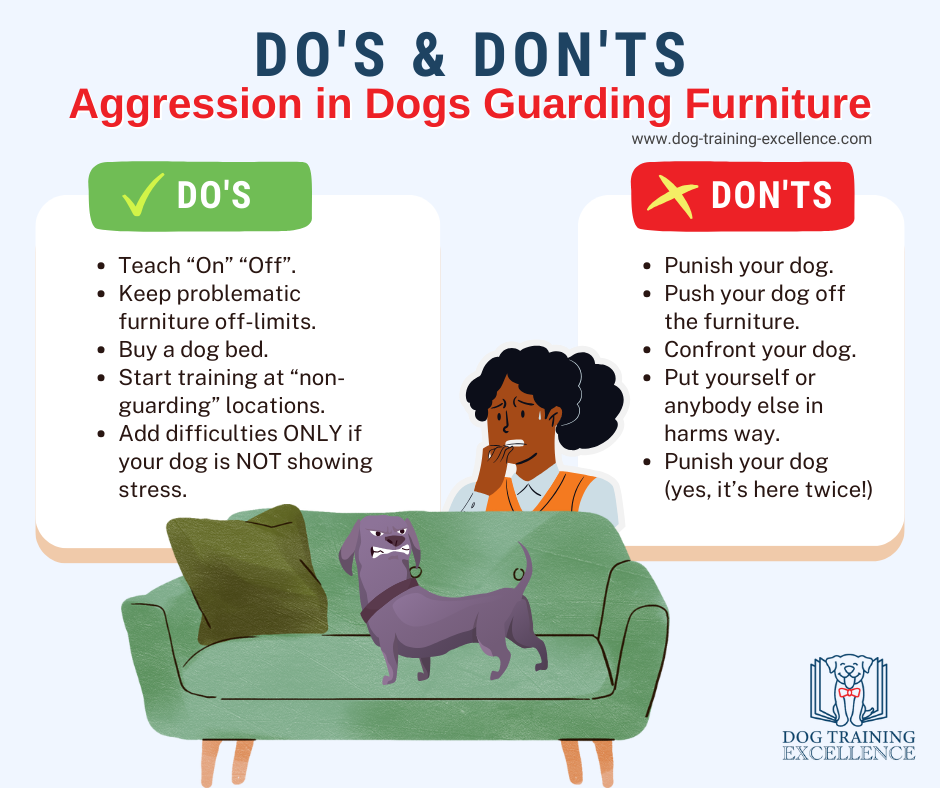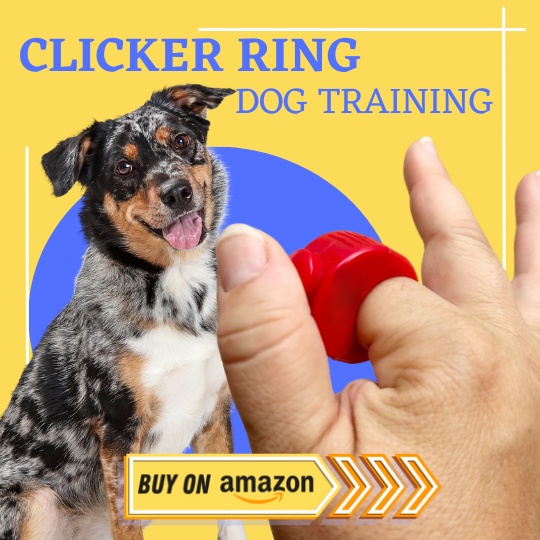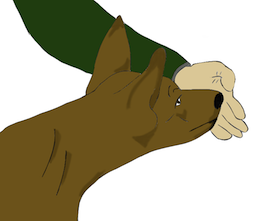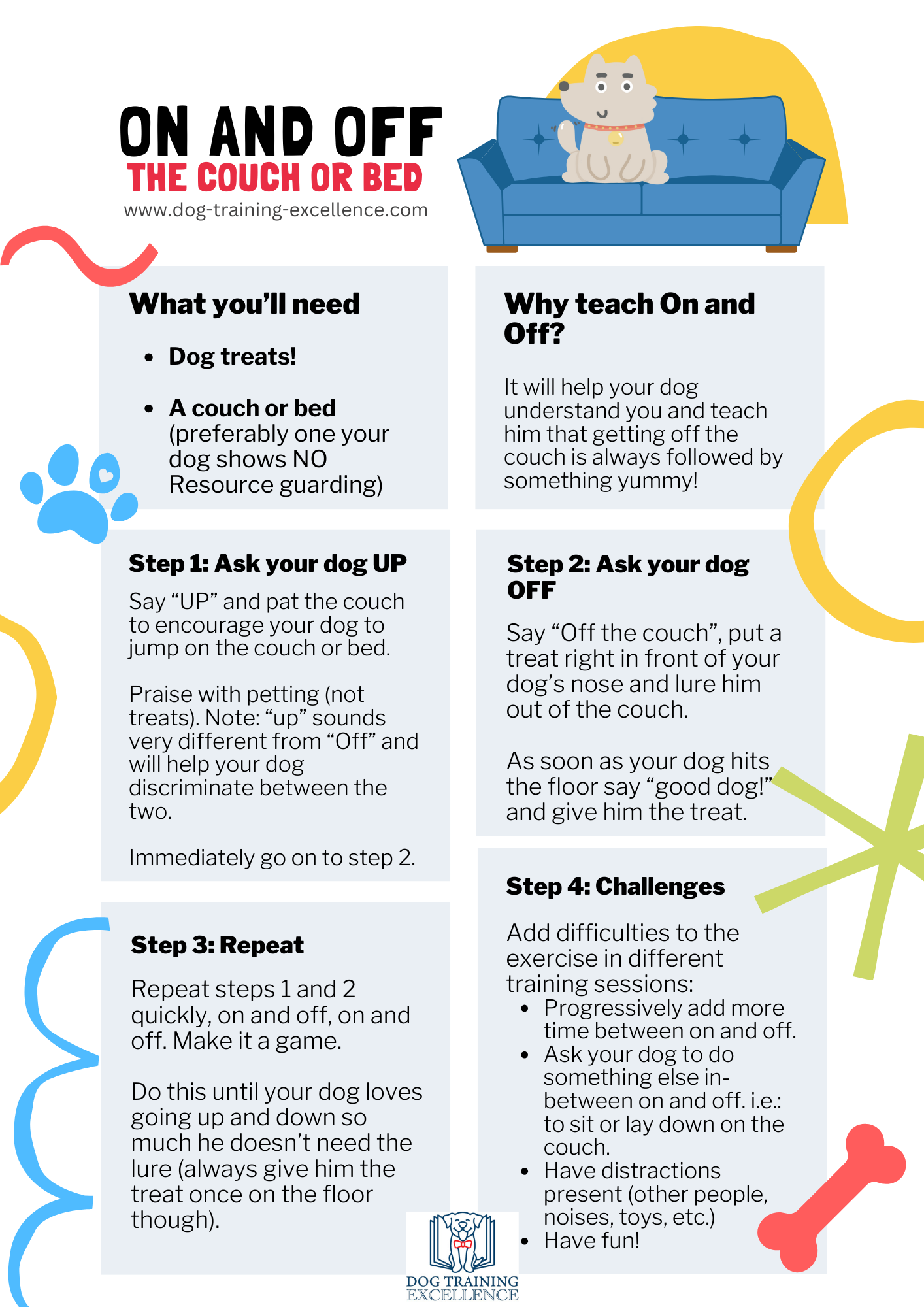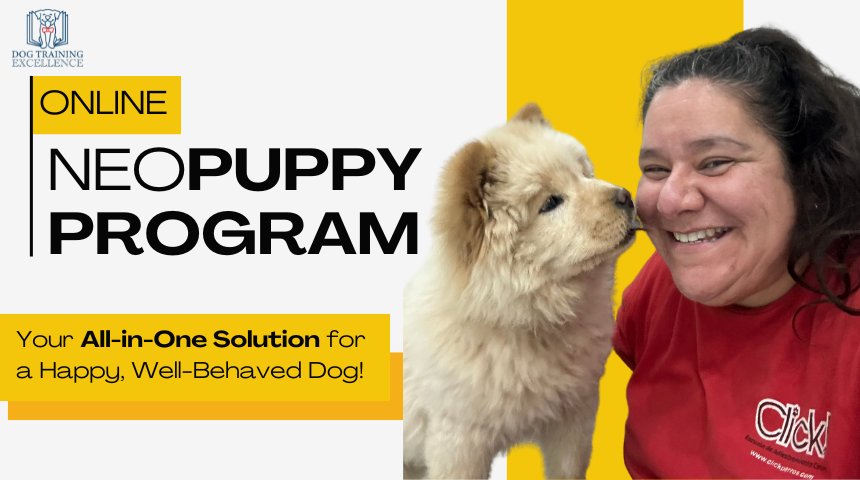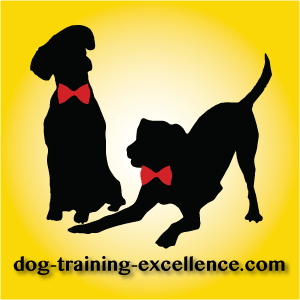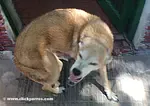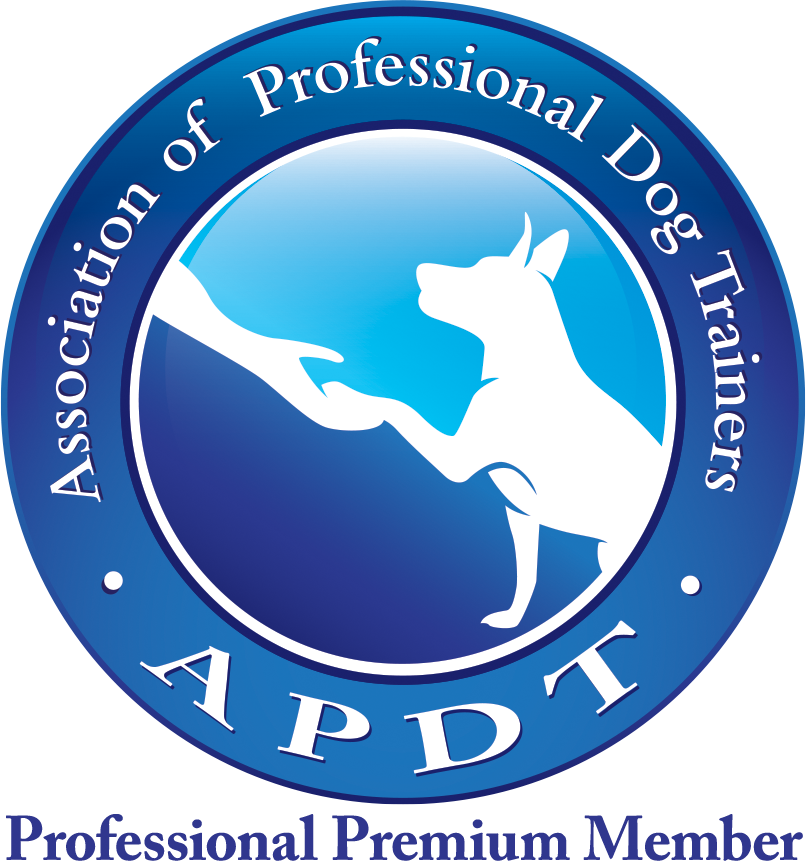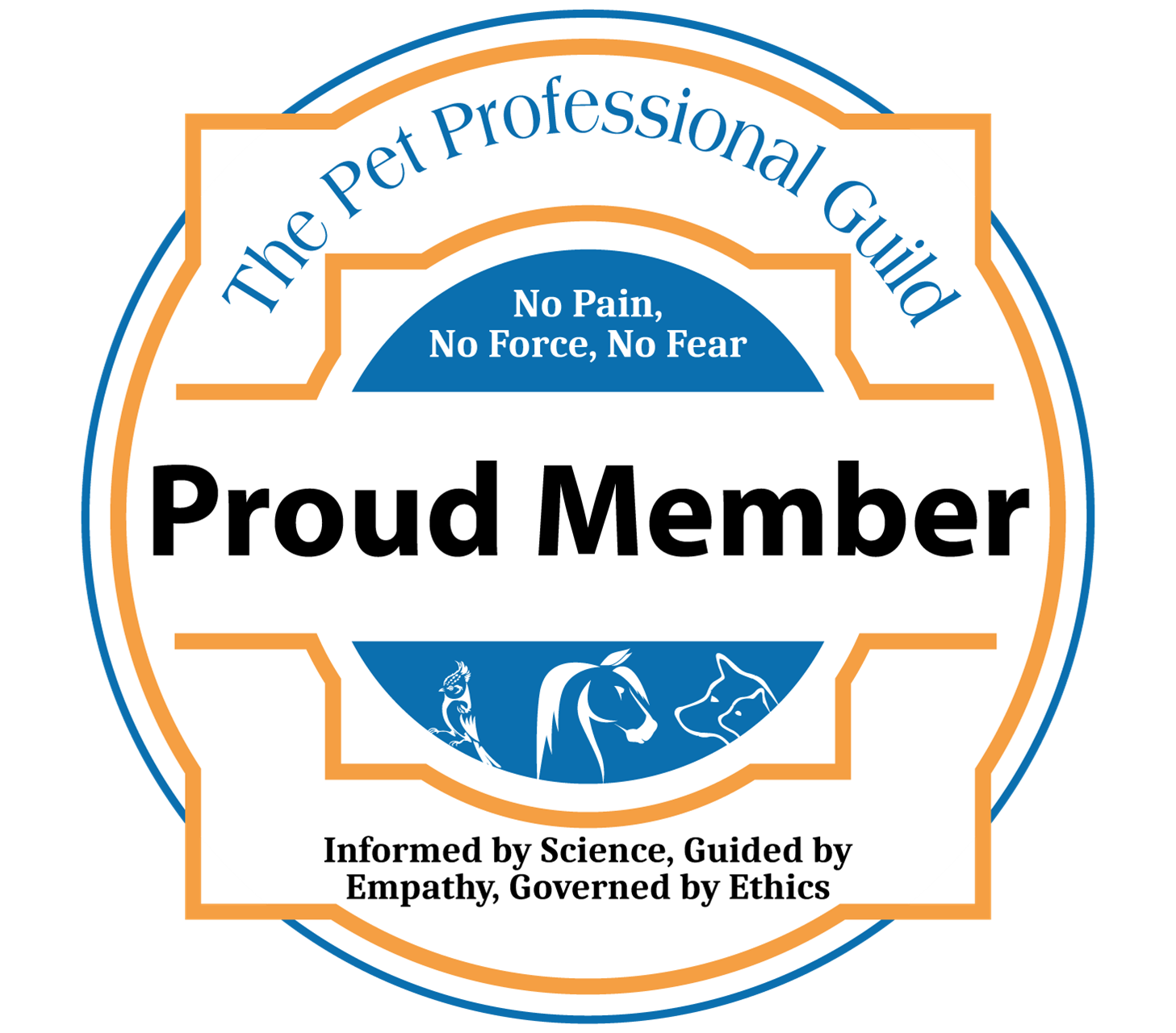I try to write my posts as unbiased as possible and recommend the products I consider to be useful and the best. I use affiliate links, this means that–at no extra cost to you–I can make a commission on a purchase you make after clicking on them. As an Amazon Associate I earn from qualifying purchases.
Solve Aggression in Dogs Guarding Furniture or Territory: Clear Steps
Aggression in dogs guarding the bed or the couch is very common. Does your dog growl at you when you approach his crate or bed? Does he growl at you when you tell him off the couch or bed? Maybe he does this to other people, not you, but still worries you? Do you observe territorial barking in your hound?
This type of aggressive dog behavior is often called Resource Guarding. It can happen with your pet's favorite places or even the whole house. Canines can also guard their food bowl, toys and even their owners. Treatment
for aggressive dogs need specialized training programs and I am here to help you start the healing journey...
Your Guide to Successful Resource Guarding Training:
- Why Do Dogs Show Resource Guarding and Territorial Aggression?
- Signs of Resource Guarding in Dogs
- Identifying and Assessing Resource guarding in Dogs (Step 1)
- Have Your Dog's Needs Met (Step 2)
- Should You Correct Resource Guarding? (Final step for some, more to go for others)
- Treatment for Aggression in Dogs Guarding Furniture (Step 3: with 10 sub-steps)
- Frequently Asked Questions About Aggression in Dogs
- Tell Us Your Story
Why does my dog growl when I tell him off the couch or bed?
Territorial behavior in dogs is a natural instinct rooted in their ancestral history as pack animals. Dogs have an innate drive to protect their territory, which can include their living space, belongings, and even their humans. Dog's ancestors had a real need for this type of behavior, they couldn't just let anyone take their safe space, they needed to protect it. Today, pet dogs no longer have need for this behavior, but it's still ingrained in their genes.
Scientific research has shown that territorial aggression in dogs is influenced by a combination of genetic predisposition and environmental factors. For instance, certain breeds, such as guardian breeds like German Shepherds or Rottweilers, may exhibit stronger territorial tendencies due to their breeding history. Additionally, early socialization and experiences during puppyhood play a crucial role in shaping a dog's perception of its environment and what constitutes a threat. Herein lies the clue to solving this problem, teaching dogs to feel safe.
Furthermore, changes in a dog's environment or routine, such as moving to a new home or the introduction of a new pet or family member, can trigger territorial behavior as they seek to reestablish their sense of security and control.
Impact on the Dog and Owner Relationship
Territorial behavior can have significant implications for the relationship between a dog and its owner. For the dog, unchecked territorial behavior can lead to heightened stress and anxiety, as they constantly feel the need to defend their territory. This can manifest in various ways, such as destructive behavior, increased reactivity towards perceived threats or even health issues.
For the human, frustration and helplessness when their dog displays aggressive behavior leads to feelings of fear, sadness or even resentment towards their pet. Why is my dog attacking me when I give him everything? Please understand this is not personal, your dog actually loves you too, but he doesn't know how to deal with feelings of insecurity, and that's where we are going to help him.
For both, territorial aggression in dogs can strain the bond between a dog and its owner, creating tension and conflict in the household. Now both of you feel stressed and things keep spiriling down!
On the flip side, resource guarding training through positive reinforcement improves the dog's behavior and strengthens the bond between the dog and its owner. By establishing clear boundaries and reinforcing desirable behaviors, owners can create a harmonious living environment where both parties feel safe and secure.
Signs of resource guarding in dogs
To start helping your dog to feel safe in their environment, you need to learn some dog body language. Recognizing how your dog feels based on his/her body posture will help you understand when to stop and when to move on in your training plan.
Escalating body language for aggression in dogs:
Dogs will escalate their behavior as they feel more and more threatened. When you start noticing your dog is escalating, you need to back down and re-think the training plan. For this, we first need to recognize these signs:
- The dog yawns, licks its nose or looks away from you: These are called "calming signals" and they are the first indication that your dog is a little bit uncomfortable. This is the ideal stage to work at on each step, we stay on each step until we see these signs dissapear and the dog noticeably relaxing.
- The dog stiffens it's body, looks at you from the corner of their eyes (whale eyes) and breathing stops or becomes tense: The dog is showing higher signals of stress, ideally we shouldn't see this type of behavior during the training process. However, if we do see it once in a while, we need to change the plan and work slower.
- The dog growls, snaps and/or barks: The dog is actively showing threatening signals, he really thinks he is going to have to protect his territory at all costs and the next step may be an attack. We NEVER, let me repeat this... NEVER, should see the dog at this stage during our training program. If you have tried to follow the steps and keep seeing these types of signals during the process, please contact a professional and certified dog trainer to help you.
Step 1: Identifying and Assessing Resource guarding in dogs
Consulting a Certified Professional Dog Trainer
When dealing with complex behavioral issues like territorial aggression, seeking the guidance of a professional dog trainer or behaviorist is highly recommended. These experts have the knowledge and experience to assess the situation objectively and provide personalized guidance based on your dog's specific needs. In a study published in the Journal of Veterinary Behavior, researchers found that dogs who received behavior modification therapy from a certified professional showed significant improvement in aggression-related behaviors compared to those who did not receive intervention.
Resource guarding in dogs can be dangerous, specially if you do not have experience in dog training for aggressive dogs. Therefore, I highly recommend you find a certified dog trainer to safely help you.
There is always a risk of injury when working with animals, please read our full disclaimer.
Observation and Documentation
The first step in addressing territorial behavior in dogs is to carefully observe and document their actions. Keep a record of when and where the behavior occurs, as well as any specific triggers or contexts that may provoke the response. These triggers can vary widely from one dog to another and may include factors such as the presence of strangers, other animals, or changes in the environment. This information will help you identify patterns and determine the severity of the problem.
I can't stress enough how important it is to keep records of your training sessions, specially with a complex problem like resource guarding. See below for a sample of how your document should look like and what to record.
The patterns, triggers and environmental factors you find will help you design a better training program to solve aggression in dogs guarding a couch, bed or other piece of furniture.
Step 2: Have your dog's needs met to solve territorial aggression in dogs
To solve any dog behavior problem, we first need to make sure our dog's needs are met. Aggressive dog behavior never happens out of the blue (and when it does it's probably a health issue!), it's a combination of factors that make your dog feel unsafe and needy. So, we need to make sure your dog feels safe and has everything he needs! Seems simple, right? Let's make sure you check every need off the list then.
A. Help your dog (and yourself!) feel safe with management techniques
Management techniques are not training. They are ways in which we can arrange the environment to help your dog feel safe, have alternatives and prevent aggressive behavior from happening even before we start with a training program. Management is EXTREMELY IMPORTANT, because we want to reduce as much as possible the perceived threats your dog sees, helping him stay calm as much as possible. This lowers stress levels, your dog is able to learn better and avoids practicing unwanted behaviors. It's a win-win!
Later one you will be combining these strategies with resource guarding training to address the underlying causes of territorial behavior and encourage positive behavior changes in your dog. In the end, management may or may not be necessary always depending on the case.
1. Limiting Access to Problematic Furniture
If your dog shows signs of territorial behavior, such as growling or snapping when approached while on the couch or bed, it may be necessary to temporarily restrict their access to these areas. This can help prevent confrontations and reduce the likelihood of aggressive outbursts.
If your dog displays this behaviors on his own bed, or maybe it's impossible to block access to the problematic piece of furniture, then I recommend you put the bed in a quiet area of the house. This way the dog can still lay on his bed, but is not stressed by constant traffic going by.
Examples:
- Use a baby gate to block off access to a room or area.
- Keep bedrooms doors closed.
- Block access to the couch by placing big boxes or upside down chairs on it.
- Move your dog's bed away from high traffic areas of the house.
2. Providing Alternative Comfortable Spaces
It's essential to provide your dog with alternative comfortable spaces where they can feel safe and secure, even if access to certain furniture is restricted. Investing in a cozy dog bed or blanket in a quiet area of the house can give your dog a sense of ownership and belonging.
In addition, giving your dog many different alternatives and options gives him more control and the ability to make his own choices (which boosts self-confidence and a feeling of safety).
- You can set up a plush dog bed in the corner of every main room, giving your dog the option to stay where people are or go somewhere quieter. Add some soft blankets and favorite toys to make the space inviting and appealing to your pet.
- Reward your dog with a treat every time the choose to stay in this new area to reinforce their behavior of staying there (instead of your couch or bed).
- If your dog is bothered by people moving around, get him a big and comfy crate and cover the crate with a blanket to give your dog privacy and quiet.
- When you think about alternative spaces, think about your own dog. What surfaces does he like? Does he like to look out a window or be in a dark space? Does he like blankets or he prefers the floor? Get to know your dog to help your dog.
3. Supervision and Monitoring
Keep a close eye on your dog, especially in situations where resource guarding may occur. By closely monitoring your dog's behavior, you can intervene early and prevent potential conflicts or escalation. Look out for signs of stress or discomfort, such as tense body language, stiff posture, or excessive panting, which may indicate that your dog is feeling threatened or anxious.
B. Safety safety safety!
In addition to implementing training and management techniques, it's crucial to prioritize safety and prevent any potential conflicts or harm when addressing resource guarding behavior in dogs. Remember, your main and most important goal is to help your dog feel safe. That's it.
1. Avoiding Confrontation and Punishment
When dealing with aggression in dogs guarding the couch (or any furniture), it's vital to avoid confrontations and punishment. How do you respond if your dog growls at you? You step AWAY from your dog, re-think your plan or call a certified professional dog trainer. You NEVER punish your dog.
I know this may sound counter intuitive, "I need to let my dog know that growling is wrong, therefore I need to punish my dog when he growls, right?" Wrong, very very wrong. Remember, I have been telling you that your main job is to help your dog feel safe? Why, because your dog is growling at you out of FEAR, he is afraid you will take away his valuable place. This makes no sense! Right? You give everything to your dog, how can he feel that way? Because he is hard-wired (genetics) to feel that way. It's nothing personal, I promise.
Punishment and confrontation can escalate aggression and erode the trust between you and your dog.
Why aggression should be "rewarded" and not punished
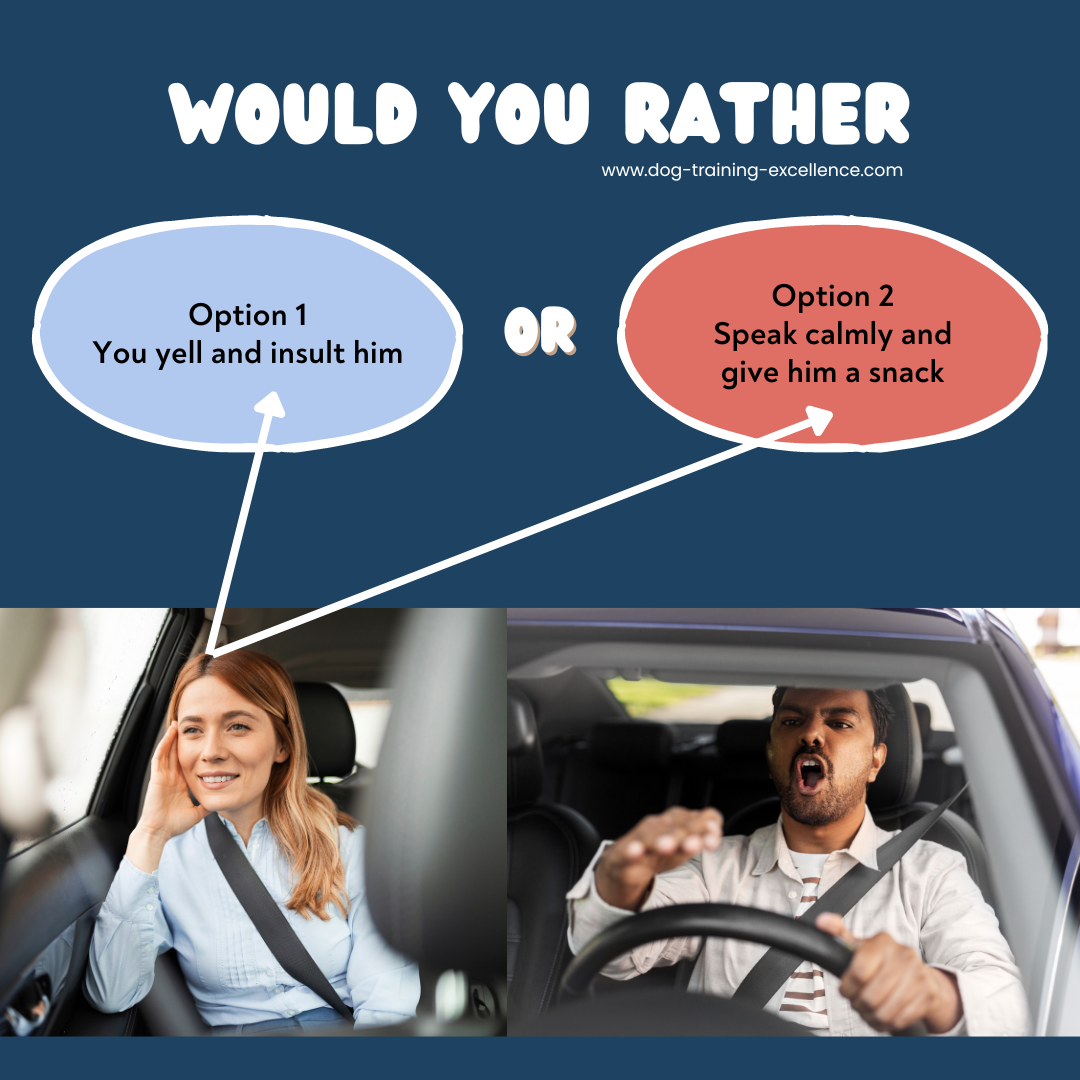
The best way to understand this, is with a human example.
Imagine you are in the car with your partner, he or she is driving on the highway and suddenly you hit a lot of traffic, and you are both late! Your partner starts cursing and hitting the steering wheel. You have two options to deal with his/her aggressive response to traffic:
Option 1: You yell at him - "ARE YOU STUPID? YOU ARE GOING TO BREAK THE WHEEL!!! STOP CURSING YOU KNOW HOW MUCH I HATE WHEN YOU DO THAT!
Option 2: You take out some cookies you brought for the trip and with a calm voice you say - " Don't worry honey, I'll text our friends to tell them we are stuck in traffic, do you want a cookie, they are your favorite one."
Which option do you think is going to encourage more calm behavior? Yes, it's pretty obvios isn't it? Because your partners aggressive behavior came out of frustration, and helping him/her calm down will make that behavior go away. Instead, if you try to "punish" that behavior, instead of stopping the behavior it's more likely that it will escalate into a very heated argument.
This is exactly what is going on with your dog. He is already feeling afraid, if you punish your dog, you are only increasing that feeling of fear and insecurity and will push your dog to escalate his aggressive behavior. Instead, if you try to make him feel safe with treats and your calm behavior, you will have more luck. Unfortunately, there is process to do this...it's not as simple as giving him a cookie. But avoiding punishment and confrontations is just as important as the training plan itself to successfully solve aggression in dogs with resource guarding.
2. Is Resource Guarding a Dominance Issue?
NO. And to be clear, no dog behavior problem is due to dominance issues. Most fear, anxiety and aggression problems in dogs are due to... you guessed it! Fear and the feeling of unsafety! Dominance theory has been disproven over and over and over again. Dominance theory trainers will tell you that you need to establish yourself as the "alpha" or "leader" with techniques that will only make your dog worse. Please do not follow any dominance theory advice, you will end up bitten, that I can promise.
Case Study: Moony bit everyone in the house!
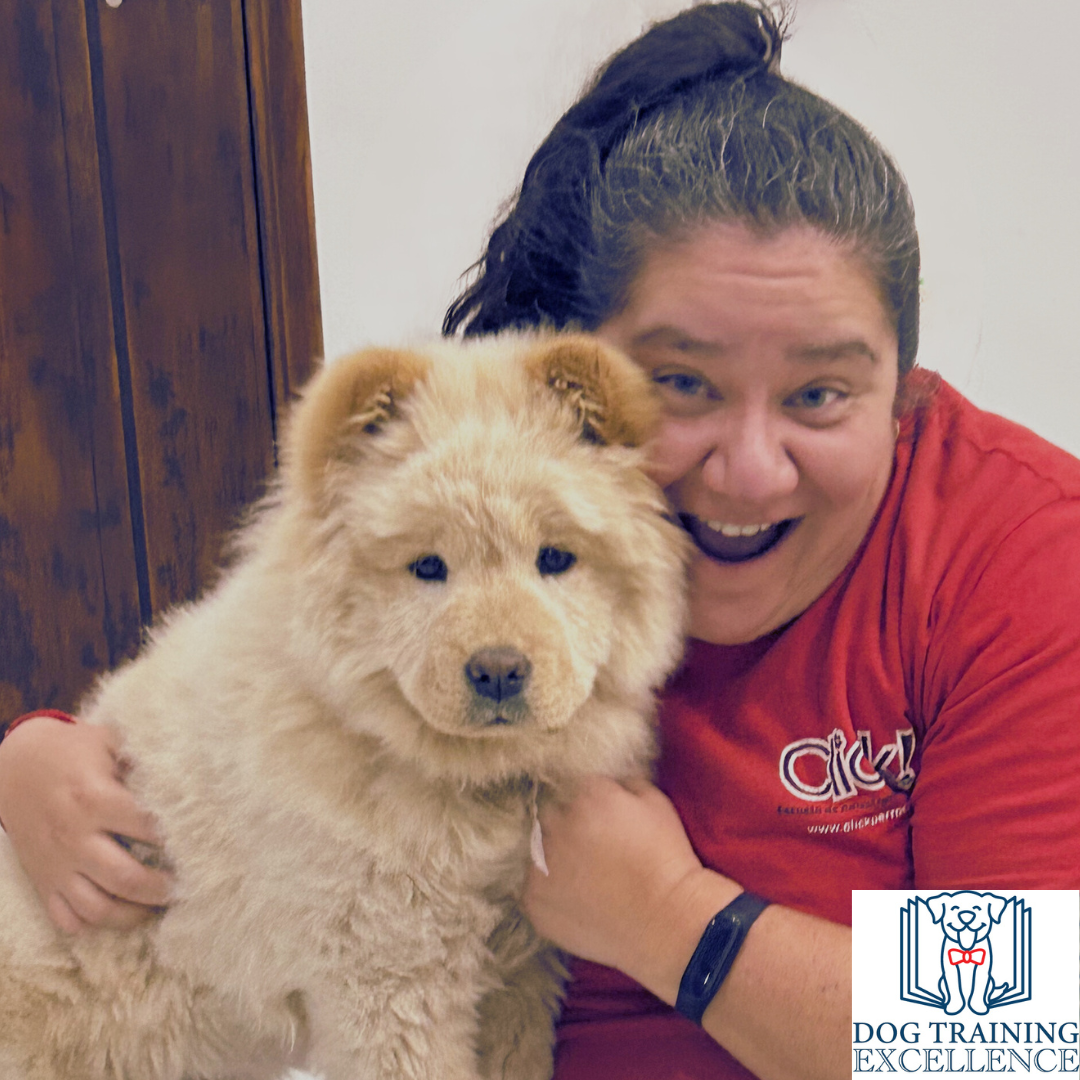
Moony is a Chow Chow mix 3-month puppy, her family called me because Moony had already bitten everyone in the house, except the baby. But they were afraid of things escalating and the baby getting hurt too. So, during the first class I asked about the incidents. This is what they told me.
They had adopted Monny from a neighbor who raised Chow-Chows. This neighbor told them that they had to establish dominance and also make sure they put their hands in the plate when Moony ate so she would learn to accept it. The vet and other people told them the same thing. So, they did it. At first Moony tensed her body, then growled and then escalated to actual biting. She bit everyone in the household because everyone kept putting their hands in the bowl when she was trying to eat.
When I met Mooney, she was terrified of me and did not approach me for the first hour. She was terrified of strange people and very stressed.
Solution: I told the family to STOP putting their hands inside her bowl, stop punishing her and started basic training (basic commands, socialization and enrichment). After 4 classes, Moony was not showing any aggressive behavior towards anyone in the household, even if they approached her bowl, she warmed up to strangers very fast and enjoyed life again (You can see she accepted me happily in the end). We didn't even need to start the actual resource guarding program!
Moral of the case study: Do not engage in confrontations with your dog, do not punish your dog, give your dog what he/she needs to feel safe and satisfied. That simple.
C. Teach Your Dog Useful Commands for Self-Confidence
Teaching your dog basic obedience commands is essential for effective resource guarding training. These commands provide you with tools to redirect your dog's behavior and maintain control in various situations but most importantly, they provide you and your dog with a communication system.
Chances are you are trying to communicate with your dog unsuccessfully. Chances are you are very frustrated. Chances are your dog is frustrated and stressed out too. Why? Because he/she REALLY wants to understand you... he doesn't know how to, you need to teach him.
Teaching your dog basic commands makes your dog smarter and more relaxed, because now he understand you! He also feel self-confidence, he knows what to do to get a reward!
Start with these basic commands that will come in handy for resource guarders:
- Sit: can be used to calm your dog and redirect their attention away from potential triggers.
- Down: can be used to calm your dog and redirect their attention away from potential triggers.
- Stay: reinforces impulse control, allowing your dog to remain calm and patient.
- Drop-it: Teaches your dog to drop something he has in his mouth without getting upset.
- Leave-it: Teaches your dog to leave something he was about to get, also very good for impulse control.
Consistency is crucial in reinforcing desired behaviors and preventing confusion in your dog. Ensure that everyone in the household follows the same rules and commands consistently. Mixed messages can lead to frustration and setbacks in training.
D. Give Your Dog Enrichment and Safe Rest
Incorporating enrichment activities, walks and providing ample opportunities for rest are essential components of maintaining your dog's physical and mental well-being. By engaging your dog in stimulating activities and ensuring they have a comfortable space to relax, you can help prevent boredom, reduce stress, and promote overall happiness.
Here are my favorite and most durable dog toys to keep your dog entertained and tired.
Kong Classic
The best dog toy in the market! It is almost indestructible, you can use it as a ball, you can fill it and make it an interactive toy, your dog can chew on it to its heart content. I recommend you start with a 2-pack, that way you can always have one frozen and ready to entertain your puppy! |
Benebone ChewsIf your puppy loves chewing on everything, then Benebone is here to save your home! These are safe and long-lasting chews full of flavor. I recommend you get a 4-pack and rotate the chews daily. This way your puppy will think he is having a new chew toy each day! |
Goughnuts toys
Another very recommended chew toy, these are USA made and also almost indestructible. Your dog will love to chase and chew any of these toys. I recommend you get one and try it with your dog, see if he likes to chase a stick or a doughnut, there are different shapes available. |
Should you correct resource guarding?
If you are wondering if you should "correct" it as in punish it, then NO. We already established that your dog needs safety, not confrontation.
If you are wondering if you should "correct the problem", as in should you even do resource guarding training? Is it worth your time? Well, those are excellent questions and what we will explore here.
There are three main types of cases when we wonder how to stop your dog from being territorial on the couch or bed. And different ways to approach each one:
- Management Only Cases: Some cases of aggression in dogs guarding the bed or couch do not require any training at all. We can just find a management solution. Usually this cases have the following characteristics: 1) There are no kids living in the house, no kids visit the house very often. 2) There is plenty of space in the house. Solution: Put your dog's bed in a low traffic area, close all doors to rooms with forbidden beds, block access to the couch. If you can find an environmental arrangement that makes your dog feel safer and there are not kids or people that could get hurt by accident. Then, that's it!
- Basic Reward-Based Training Only Cases: Just like the case I told you about before (Moony), some dogs are aggressive because their owners made them by being confrontational. Stop using punishment, teach your dog basic commands, have all your dog's needs met and see how quickly your dog stops trying to defend itself from you (stops being aggressive).
- Resource Guarding Training Cases: If you do not fall into any of the above categories, then you need to continue reading. Resource guarding training can be overwhelming and even though I will teach you the general strategy, each dog needs a personalized program, hire a certified dog trainer if you need to!
Step 3: Treatment for aggression in dogs guarding furniture
This is a sample tutorial that contains 10 stages, each one consisting of several steps. You will most likely need to change it depending on your particular situation, but the process is the same. The whole idea is to give you a template you can follow and adapt to your unique case.
If you think your dog will bite you, please wear protective gloves or have your dog wear a muzzle in the beginning. However, as mentioned above, if your dog shows signs of stress or threat you are not following the protocol correctly and need to adjust it or consult with a Certified Dog Trainer.
Recommended Positive Dog Training Tools
Positive dog trainers are known to use very little gadgets and tools. This is because we want training to be positive and won't use corrective leashes nor other corrective tools. We do use 3 very basic tools for dog training, here are my favorite ones:
The perfect treatThe perfect treat is small, yummy, healthy and easy to store just like Stewart Freeze Dried Dog Treats. Freeze dried treats are natural and easy to carry around without making a mess and dogs love them! |
The pouchProfessionals use treat pouches because they free your hands and help with timing. The best one have a magnetic clasp and a removable inner bag for easy washing like the Viklluyr Dog Treat Pouch. |
The clicker
This one is NOT an absolute must, but when you get to advanced training it will be a good tool to have. My favorite kind is a clicker ring, because it also keeps your hands free. Clicker training is fun! |
STAGE 1: "Touch" command
Professional Tip:
Save the best treats for later. You will need a very high value (your dog goes nuts about it!) treat for the next step when we actually teach your furry friend to get off the furniture nicely.
Goal: To treat aggression in dogs guarding furniture it is useful to have your dog follow a target or even approach it from a distance if cued to do it. This is called target training and will enable you to move your pet away from a piece of furniture without pushing him away.
What you will need: A target (this could simply be the palm of your hand, a fist or tip of your index finger). You can also use a more sophisticated device like a wooden spoon or even a commercial target with a clicker attached to it. You will also need food rewards such as dog treats, regular kibble, pieces of chicken, cheese, carrots, and anything your hound likes. A treat pouch is another useful tool to have treats handy.
1. Stretch your fist (palm of your hand or target stick) out when your canine friend is looking at you. If he looks at it, approaches or even touches it click and treat!
2. Repeat many times. If your dog is
only looking at your fist but not approaching it try using shaping to
get him to touch it. Shaping is a method in which you will reward
smaller approximations to the end goal. For example, first you reward
him for looking at your fist, then you reward him (click and treat) for
moving closer, and so on until he has his nose glued to your fist.
3. When he starts putting his nose against your fist, start moving him around (he should follow your hand, nose glued to your fist). Start by moving your hand a few inches, reward if he follows, then a little bit further and so on. Keep doing this until you can move him all around your house.
4. Now say the command "touch" or "target" (whichever word you like best, but pick only one and stick with it).
After you say it extend your fist, click and reward when your pet
touches it.
5. After many repetitions your hound should start approaching you after your say the command and before you extended your fist (which acts as a visual command or hand signal).
6. You are ready to go to the next step when your furry friend reliably (8 out of 10 times) responds to your verbal command "touch".
Professional Tip:
Treatment for aggression in dogs requires patience. NEVER move on to the next step before your pooch is ready.
The slower you go, the faster your dog will learn!
STAGE 2: Start with non-guarded furniture
Goal: To be able to cue your dog "On" and "Off" a location he does NOT guard. For example, if he guards his crate, then use the sofa. If he guards every piece of furniture in the house, then find a nice location and maybe throw a rug on the floor to start training.
Now you are ready to start using those extra yummy treats. These should be sacred rewards that ONLY come out during these times. Only when working on treating aggression in dogs with territorial resource guarding.
- Cue your dog with your "touch" command to get "on the couch" (or whatever piece of furniture you are working with). You should see no dog growling, snarling or barking).
- Immediately Target your dog "off" the couch, as soon as he does it click and treat!
- Repeat 3-5 times. Then start adding a different word: instead of "touch" say "On" (or "Up", "inside" whatever you like) and "Off" (or "down", "out").
- After many repetitions your hound should start understanding the verbal command "On". Try it by saying the word and waiting a few seconds before using the fist as a hand signal.
- As you start fading out the treats (never go below 7 treats out of 10 good responses, your pet might get frustrated at this point). Try to reward with food only if your pet responds to your verbal cue without the hand signal.
- Repeat meant times "on" the couch, "off" the couch. Remember that your are mostly rewarding the "off". Only "reward the "on" if you see your pet loosing interest, but don't do it too often.
- You are ready to move onto the next step when your pet reliably steps on and off the couch on your command. Note: This is only on a couch (or place) he doesn't show any territorial barking or growling.
Important: the sequence is as follows
You say the
command "on", then you extend your fist as a visual cue to target, then
dog touches it and gets onto the piece of furniture, then you say "off",
then you extend your fist as a visual target. After your hound gets
off, you click and treat!
STAGE 3: Move on to guarded furniture
Goal: To be able to cue your dog onto a piece of furniture he DOES guard.
You are getting the idea right?…we are adding small difficulties one at a time, going SLOWLY is the key to solve aggression in dogs! Be patient and soon you will no longer have a problem of aggression in dogs guarding furniture.
- Repeat the steps in STAGE 2 but now on a location your dog DOES guard.
Professional Tip
The number of times you need to repeat each step depends entirely on how your dog is reacting. If he is calm and happy, move on to the next step; if not, keep repeating the same step. You will need LOTS of repetition in the beginning, so just be patient. If at any point your dog shows overt signs of aggression (barking or growling) you need to step back. Review systematic desensitization and counterconditioning for more help.
STAGE 4: Add time
Goal: To be able to cue your dog onto a piece of furniture AFTER he has been there for a while. Many times, aggression in dogs that guard their furniture happens because they might feel less inclined to get off the couch/bed/crate if they have been there for some time and are comfortable. You need to teach your pet that no matter how long he has been there, he needs to get "off" when you ask.
- Repeat the steps in STAGE 2 but now wait 1 second before you command "off".
- Then wait 5 seconds.
- Repeat alternating times randomly (1-3-2-57-10-3 sec). They idea is to prevent your pet to predict WHEN you will ask him "off".
- Keep adding time until you reach up to 30 minutes. Remember always keep it random!
- At some point you can also start adding other difficulties like you leaving the room and coming back. Again always with small increments!
- Also add different directions you are coming from, leave to different rooms of the house, etc.
Professional Tip
It might seem obvious to you that if you teach your dog to step "off" the couch when you leave to your bedroom…well the same should be if you leave for the kitchen! Right? Wrong…most dogs are very bad at making those assumptions, so we need to teach them one by one. The good news is that eventually they do get it and will start generalizing the concept to different situations. Territorial guarding is a serious issue and you need a lot of training.
STAGE 5: Ask other people to participate
Now you will actually repeat Training STAGES 1-3 but with different family members. This will teach your pet to nicely get off a place whenever ANYONE asks him to. To treat aggression in dogs, generalizing a concept is extremely important to help your pooch understand the concepts better.
Your dog should be showing no signs of aggression by the time you reach this step. You do not want to put other people in front of an aggressive dog. If you are not sure, find a certified trainer with aggression in dogs expertise who can do the exercises. It will count as a different person!
Repeating the steps above you can always add different difficulties when treating aggression in dog with resource guarding. Here are some examples.
STAGE 6: repeat STAGES 1-4 adding distance (ask your pet to get off the furniture from different distances)
STAGE 7: repeat STAGES 1-4 after petting your dog (start by reaching out your hand, then petting him for a second, 2 seconds, etc.)
STAGE 8: repeat STAGES 1-4 After you sit next to your pet (start by bending a little bit but not sitting all the way, then sit and slowly add time)
STAGE 9: repeat STAGES 1-4 The sky is your limit! Be creative in adding difficulties that could come in handy later on. The more you work with your canine friend the better the chances you will solve resource guarding and aggression in dogs.
Of course your list might look differently, it's OK as long as YOU KNOW what is important for your dog to know, you will be fine.
If your dog is likely to bite please do all of the above steps with a muzzle and then do them ALL OVER AGAIN without it. Aggression in dogs is heightened when stressed so all measures of security should be taken.
STAGE 10: Just reminders...
This the end of the step-by-step guide to dog training for aggressive dogs guarding furniture. Your hound should be doing great by now. All you need to do from now on is once in a while ask him to step off a piece of furniture and give him a treat when he does it. Randomly mix duration, distance, location, people, everything you did above. These should be like little test-reminders. You do not need to do this every day anymore, just once in a while to make sure things are OK.
If at any point of this tutorial you notice NO changes in your dog, or you can't even get him to relax to start with the program, I suggest you visit your vet and ask about meds for aggressive dogs. Medication will help your dog relax and be able to learn better.
Frequently Asked Questions About Aggression in dogs
Why is my dog possessive over the couch?
Why is my dog possessive over the couch?
Most likely, your dog feels threatened when someone approaches the couch because he has an instinct to protect its resources. Even though your dog is safe in his home and probably has more than one place to sleep, his genes tell him to guard and protect his favorite place. It is not personal, your dog loves you just as much as you love him. Teach him to feel safe instead of getting upset, you can follow the steps in this article.
Should I growl back at my dog?
Should I growl back at my dog?
Absolutely not! Your dog is growling to communicate to you that he/she feels unsafe and wants you to stop or move away. Do so, stop and/or move away, give your dog space to recover. The follow a reward-based program to help your dog feel safe in these situations.
How do you respond if your dog growls at you?
How do you respond if your dog growls at you?
Dog growling is communication, not aggression. Your dog is desperately trying to tell you to back off or stop doing what your are doing. So, stop and back off. That is the first step for your safety and also for your dog's safety as well. Your dog growls because he is feeling unsafe, you need to help your dog feel safe again. This usually means giving him space, time to recover, a place to hide or the chance to get away from the scary situation.
If this happens often in similar situations, for example your dog growls at your because you tell him off the couch or when you sit on the couch, then you need to follow a program like the one outlined in this article to help him/her.
How do you discipline a growling dog?
How do you discipline a growling dog?
You don't. Help your dog get away from the scary situation and keep everyone safe. Give your dog space or encourage your dog to back away into a safe space. A growling dog is scared, you need to help the dog relax and learn to feel safe in these situations with a training program that includes desensitization and counterconditioning.
Should you alpha roll your dog?
Should you alpha roll your dog?
Absolutely NOT! Dominance theories and techniques have been disproven over and over again! If your dog trainer, vet or any other person told you to do this, please ignore them. They are not up to date with the most modern, effective and safe techniques to treat aggression in dogs.
Do dogs grow out of resource guarding?
Do dogs grow out of resource guarding?
Generally they don't on their own. But using positive training methods (to teach basic commands), making sure your dog has plenty of enrichment, exercise, rest, and is in good help, all help make your dog feel safer, decrease stress and so decrease aggressive behaviors and resource guarding. Some cases do not need any special training, others need to follow a personalized program.
Can dogs be trained out of resource guarding?
Can dogs be trained out of resource guarding?
Absolutely YES! Following a positive reinforcement program along with systematic desensitization and counterconditioning (like the outlined in this article) can help your dog feel secure and stop being aggressive over his possessions.
What triggers resource guarding in dogs?
What triggers resource guarding in dogs?
Mostly genetics. What we call resource guarding, is actuallt a group of behaviors meant to protect the resources of your dog. In the wild, the dog's uncestors needed these behaviors for survival, they couldn't just let any animal steal their food, territory or family. Today's pet dogs don't really need these behavior anymore, but the genes are still there. Because there is no evolutionary pressure for most dogs to have these behaviors (they are not necessary for survival and reproduction), we see some dogs with strong genetic propensity to resource guard and other dogs that couldn't care less if you take away their food or toy. It's random, and you can't predict if a puppy will show resource guarding or not until you see it. But I have seen puppies younger than 2 months already displaying aggressive behaviors to guard a bone or food (don't worry, they can be trained).
Now, its not all genetics! The environment plays a crutial role too. The friendliest dog in the world can show resource guarding aggression if the situation is right. Usually stressful events (moving, the adoption of another dog, the arrival of a baby, etc.) can trigger aggression in dogs. But high value resources (a comfy bed, best location, high-value treat) can also make any dog protective.
Is resource guarding always aggressive?
Is resource guarding always aggressive?
Not necessarily, a dog may show resource guarding but never be aggressive because the situation never escalates to that point. I have seen many dogs steal every other dog's toys but never get aggressive because the other dogs never challenge him (not worth it!).
Any dog may show aggression when guarding a resource if pushed to the limit. That is why punishment and confrontation are the WORST methods to treat aggression in dogs guarding a bed, couch, toy, food or human. This will only make the problem worse (see case study above).
Tell us your story
Do you have a story to share? You can help other dog lovers by sharing your story, please fill out the form in this link! You need to write at least 150 words and upload a picture of your dog for the question to be published.
Ready to Train Your Puppy the Smart Way?
I’m Dr. Natalia Rozas, Certified Professional Dog Trainer and Neuroscientist.
The NeoPuppy Program combines 80+ short videos and 4 online private coaching sessions so you can train your puppy effectively and kindly, backed by science.
✅ Train at your own pace
✅ Personalized online guidance
✅ Results without stress or punishment
👉 Explore the NeoPuppy Program
This article was written by Natalia Rozas, Ph.D. and Certified Professional Dog Trainer (CPDT-KA #4071465) and updated on March 29th, 2024. Case studies and anecdotes are real but to protect the privacy of our clients the names and details are changed.
- Home
- Resource Guarding
- Aggression in Dogs
